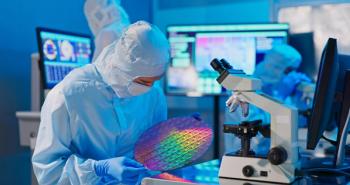
- Special Issues-11-01-2010
- Volume 0
- Issue 0
Determination of Trace Elements in Over-the-Counter Cough Syrup by Inductively Coupled Plasma-Optical Emission Spectroscopy
Recently, the attention of the U.S. Pharmacopeia (USP) has turned to the elemental impurities found in drug products. Before its most recent activities, USP methods for determining elemental impurities have relied upon outdated methodology that is qualitative, relatively insensitive, and can be used only for the determination of a subset of the toxic elements that should be quantified (USP Chapter <231> - Heavy Metals). Proposed changes have been made that utilize modern analytical techniques for measuring a larger number of heavy metals at toxicologically relevant concentrations. As of this publication, the expected date for implementing changes to USP Chapter <231> is September 2013.
Recently, the attention of the U.S. Pharmacopeia (USP) has turned to the elemental impurities found in drug products. Before its most recent activities, USP methods for determining elemental impurities have relied upon outdated methodology that is qualitative, relatively insensitive, and can be used only for the determination of a subset of the toxic elements that should be quantified (USP Chapter <231> - Heavy Metals). Proposed changes have been made that utilize modern analytical techniques for measuring a larger number of heavy metals at toxicologically relevant concentrations. As of this publication, the expected date for implementing changes to USP Chapter <231> is September 2013.
In this work, the determination of 16 toxic elements in over-the-counter cough syrup by inductively coupled plasma–optical emission spectroscopy (ICP-OES) is described. Cough syrup samples were prepared in 2% nitric acid and analyzed in accordance with the proposed changes to USP Chapter <233> - Elemental Impurities Procedures. Detection limits for all elements of interest were calculated in a solution matrix containing 1% nitric acid and 1% hydrochloric acid. Sample results, including spike recoveries and the analysis of six replicate sample preparations, are presented.
Introduction
Recognition of the adverse effects of human exposure to toxic elements in drugs has increased over the last two decades. Elements such as arsenic, cadmium, lead, and mercury are found commonly in drug substances and the elemental analysis procedures outlined by the USP do not allow these elements to be quantified reliably at toxicologically relevant concentrations.
The USP has identified two classes of elemental impurities that must be quantified in all substances involved in the manufacturing of a drug including: raw materials, catalysts, active pharmaceutical ingredients (API), excipients, and the finished product. Class 1 elemental impurities are considered to be hazardous to the environment and toxic to humans, even when present at low concentrations. All four of these elements must be quantified, regardless of whether they were used during the manufacturing process. Class 2 elemental impurities are considered to be less toxic and hazardous than those outlined in the first class. Class 2 impurities need only be measured when they have been added to the drug manufacturing process.
Table I: Class 1 elemental impurity limits set by USP
The USP has set limits on the concentrations of Class 1 and Class 2 impurities that can be present in drug substances (1) and those limits are outlined in Tables I and II. The limits are reported as total permissible daily exposure (PDE) limits in units of micrograms per day. The impurity limits for each class are defined separately for drug substances that are consumed orally as well as those consumed parenterally (injected or inhaled).
Table II: Class 2 elemental impurity limits set by USP
Protocols for quantifying Class 1 and Class 2 elemental impurities are outlined in USP Chapter <231> - Procedures. Established in 1905, these procedures involve colorimetric reactions based upon metal sulfide precipitation. Not only was the chemistry in these protocols developed well over 100 years ago, but the reactions have many challenges and drawbacks associated with them. For example, the reaction itself produces hydrogen sulfide (H2S), which poses a substantial health threat to the personnel performing the analysis. The reaction is also challenging to reproduce which affects the reliability of the results. The heavy metals are quantified via visual comparison with a colored, lead-based standard that produces results that are subjective, hard to reproduce and potentially inaccurate. The lead standard itself is unstable and changes color over time, which makes the procedure time-sensitive and makes spike recovery studies and duplicate analyses difficult to perform. The reactions are not element specific unless the elements of interest are separated before the sulfide precipitation. Furthermore, the sensitivity of the reaction varies by element and some elements might not react at all (2).
The USP is working to update current protocols to include more modern instrumental methods for elemental analysis. The new protocols outline the use of spectroscopic techniques for determining elemental impurities and require adherence to specific validation procedures to ensure analytical quality control. The validation requirements for analysis by ICP-OES are outlined in the following.
The instrument must be calibrated at concentrations equal to 0.0 J, 0.1 J, and 2.0 J, where J represents the appropriate limit for each elemental impurity of interest (refer to Tables I and II for elemental impurity limits). The standards must be prepared in a matrix that matches the acid concentration and content of that in the prepared samples. Once calibrated, three check standards must be analyzed at concentrations equal to 0.5 J, 1.0 J, and 1.5 J. The measured concentration of each check standard must be within 80–150% of the true (that is, known) concentration.
After passing check standard results have been recorded, the precision and accuracy of the method must be determined. Accuracy is determined via spike recovery results of samples spiked at concentrations equal to 0.5 J, 1.0 J, and 1.5 J. Each spiked sample must be prepared in triplicate and the average spike recovery at each concentration must be in the range of 80–150%.
The precision of the method is determined based upon six replicate sample preparations, each spiked at a concentration equal to 1.0 J. Short-term precision, termed "repeatability," is calculated based upon the %RSD of these six spiked samples, measured as a single, consecutive data set. The calculated RSD value must be less than 20%. Longer-term precision, termed "intermediate precision," is based upon two nonconsecutive measurements of the six spiked samples. For these measurement sets to be considered nonconsecutive, the second analysis must be performed according to one of the three following options: samples can be measured by a different analyst, samples can be measured by the same analyst using a different instrument, or the analysis can be performed on a different day. The %RSD is calculated for the 12 sample results and must be less than 25%.
This work will demonstrate the ability of an ICP system to analyze commercially available cough syrup. The sensitivity and large linear dynamic range of the instrument in the axial view mode will be used to determine a wide range of elements in several different nonprescriptive cough syrup products.
Experimental
A Dual View Prodigy High Dispersion Inductively Coupled Plasma (ICP) (Teledyne Leeman Labs, Hudson, New Hampshire) equipped with an 88-position autosampler was used to generate the data for this manuscript. The sample introduction system consisted of a four-channel peristaltic pump, glass cyclonic spray chamber with a center knockout tube, a single-piece quartz torch and a Conikal concentric nebulizer (Glass Expansion, Pocasset, Massachusetts). Instrument conditions used for all data collection are listed in Table III.
Table III: Instrument parameters used for all sample analyses
All solutions were prepared using >18 MΩ-cm2 water (Barnstead, Dubuque, Iowa), reagent-grade hydrochloric acid (VWR, West Chester, Pennsylvania) and reagent-grade nitric acid (VWR). Multielement calibration standards were prepared by dilution from single-element stock solutions (PlasmaPure Standards, Teledyne Leeman Labs, Hudson, New Hampshire) containing 1000 µg/mL of As, Cd, Cr, Cu, Hg, Ir, Mn, Mo, Ni, Os, Pb, Pd, Pt, Rh, Ru, V, and Zn. All dilutions were performed on a w/w basis.
Table IV: Calibration standard concentrations (µg/mL) for Class 1 elemental impurities, prepared in a 1% nitric and hydrochloric acid matrix
Calibration standards were prepared in two groups to represent the two classes of elemental impurities. For applications in which Class 2 elemental impurities do not need to be quantified, only standards 1–5 need to be prepared. Each group of standards was prepared at concentrations equal to 0.0 J, 0.1 J, 0.5 J, 1.0 J, and 2.0 J where J represents the oral daily dose permissible daily exposure concentration (refer to Table I). All standards were prepared in a matrix of 1% nitric acid and 1% hydrochloric acid. The concentrations used for calibration are listed in Tables IV and V.
Table V: Calibration standard concentrations (µg/mL) for Class 2 elemental impurities, prepared in a 1% nitric and hydrochloric acid matrix
Because all elemental impurities were present in the check standards and spiked samples, an interfering element correction (IEC) factor was required to correct for the interference of Pt on the emission from As at 189 nm. If left uncorrected, the spectral overlap from Pt would produce biased results for As. The interfering element correction factor was calculated using a single-element standard containing 20 µg/mL of Pt. After calibrating the instrument, the Pt solution was analyzed and the measured concentration of As was recorded. The Prodigy software used this concentration to automatically compute and apply the appropriate correction factor.
The analytical method described here was applied to an over-the-counter cough syrup for the determination of trace elements. The product used was a nonalcoholic cough suppressant containing dextromethorphan HBr and guaifenesin. A total of 15 replicate preparations of the cough syrup sample were prepared for analysis, as outlined in USP Chapter <231>. Four of the preparations were spiked with the elements of interest such that the concentrations of the spiked elements were at 0.0 J, 0.5 J, 1.0 J, and 1.5 J. This set of spiked samples was prepared in triplicate for purposes of calculating an average spike recovery at concentrations equal to 0.5 J, 1.0 J, and 1.5 J.
The remaining three preparations were spiked with all elements of interest such that the concentrations of the spiked elements were at 1.0 J. These three preparations, along with the three preparations spiked at 1.0 J described earlier, were analyzed consecutively to determine the repeatability of the sample preparation procedure.
All samples were prepared for analysis according to the following procedure. Approximately 9 g of each cough syrup sample was weighed into a 50-mL polypropylene vial with a screw-cap top and the exact weight was recorded. To each sample, approximately 20 g of a 2% nitric acid solution was added. Appropriate aliquots of a multielement standard containing As, Cd, Cr, Cu, Hg, Ir, Mn, Mo, Ni, Os, Pb, Pd, Pt, Rh, Ru, V, and Zn were added to 12 of the sample preparations. The other three preparations remained unspiked. All samples were brought to a final mass of 50 g with a 2% nitric acid solution and the final masses were accurately recorded. All samples were tightly capped and manually shaken for 30 s.
Three check standards were prepared at concentrations matching those in standards 4, 5, and 6. The check standards were prepared by dilution on a w/w basis following the procedure outlined above for preparing the calibration standards. Each check standard was prepared in a matrix of 1% nitric and hydrochloric acid to match the acid concentration and content of the calibration standards.
After the plasma was ignited, the instrument was allowed to warm up for 15 min before the torch observation height was set using standard 1.5 J (see Table IV). Following calibration, a check standard was analyzed to confirm the accuracy of the calibration curves. After the check standard measurement, a study was performed to determine the method detection limits (MDL) for the elements of interest. The MDLs were measured in a prepared cough syrup sample spiked with all elements of interest at concentrations three times the calculated instrument detection limits (IDLs). The MDLs were calculated to be the concentration equal to three times the standard deviation of seven replicate measurements of this spiked sample.
Results and Discussion
Results for the MDL study are reported in Table VI in units of microgram per milliliter. Detection limits are reported for the prepared solution as well as for the original sample after the appropriate dilution factor was corrected for. Results in Table VI indicate that the detection limits are more than sufficient for determining whether the analytes of interest are present at concentrations that exceed the regulatory requirements outlined in Tables I and II.
Table VI: Detection limits in a 1% nitric and hydrochloric acid matrix
Results for the analysis of the cough syrup sample are listed in Table VII. Results are presented for the measured concentrations in the unspiked sample, along with the average spike recovery of each spiked sample that was prepared in triplicate. All results in are listed in units of micrograms per gram and reflect the concentration in the original sample after appropriate weight and volume correction factors were applied.
Table VII: Results for cough syrup analysis
Results for the analysis of six individual sample preparations, all spiked with the elements of interest at concentrations equal to 1.0 J, are presented in Tables VIII and IX.
Table VIII: Results for cough syrup spiked at 1.0 J, Day 1
Results from the analysis of the check standards prepared at concentrations equal to 0.5 J, 1.0 J and 1.5 J (data not shown) indicate that all analytes were recovered between 80% and 150%, which meets the requirements in the new USP guidelines. The lowest recovered element was Pt, which was recovered at 88% of the true (that is, known) concentration in the 0.5 J standard. The highest recovered element was Cd which was recovered at 105% of the true concentration in the 0.5 J standard.
Table IX: Results for cough syrup spiked at 1.0 J, Day 2
Results in Tables VII, VIII, and IX indicate that all elements of interest were recovered well within the 80–150% recovery range outlined by the USP. The RSD values in Tables VIII and IX indicate that the repeatability and intermediate precision of the method easily comply with the maximum allowed RSD values of 20% and 25%, respectively. Results also indicate that if regulated under the new USP guidelines for elemental impurities, the sample tested in this work would comply with all regulatory limits.
Conclusion
The determination of 16 toxic elements in commercially available cough syrup has been presented. The results presented in this application note demonstrate that the ICP system produces results that meet the proposed requirements outlined in USP Chapter <233>. The instrument consistently produces accurate and reliable results, making it adequate for the analysis of pharmaceutical samples on a routine basis.
Manuel Almeida, Maura Rury, John Condon, and Peter Brown are with Teledyne Leeman Labs, Hudson, New Hampshire.
References
(1) A. DeStefano, K. Zaidi, T. Cecil, and G. Giancaspro, USP Elemental Impurities Advisory Panel. Pharma. Forum, 36, 2–9 (2010).
(2) Borer et al., PharmTech Webcast, June 4, 2009.
Articles in this issue
about 15 years ago
Interference-Free Drinking Water Analysis Using ICP-OESabout 15 years ago
Trace Elemental Determination in Residual Fuel Oils Using ICP-MSNewsletter
Get essential updates on the latest spectroscopy technologies, regulatory standards, and best practices—subscribe today to Spectroscopy.




